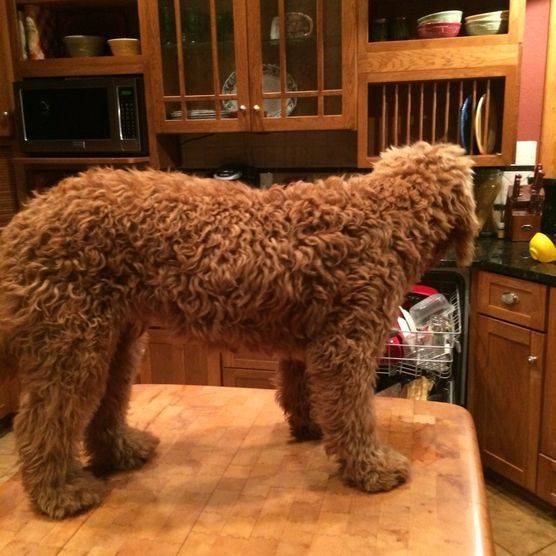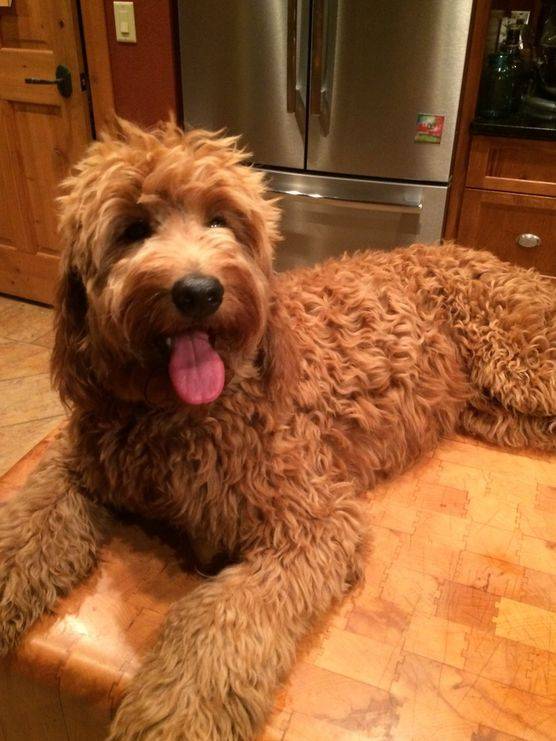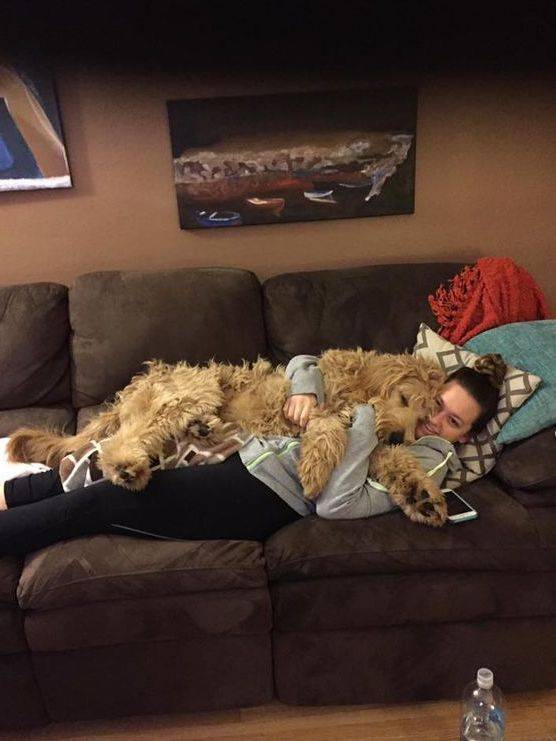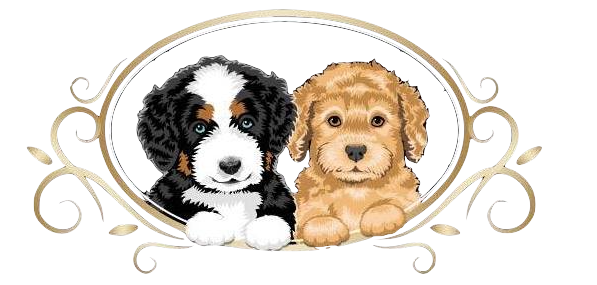Doodle Coats
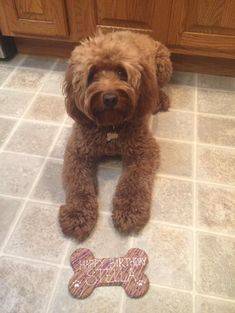
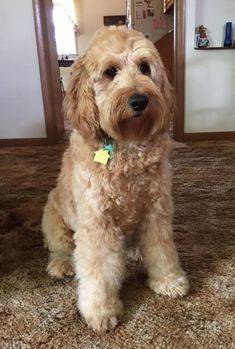
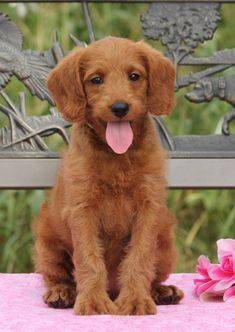
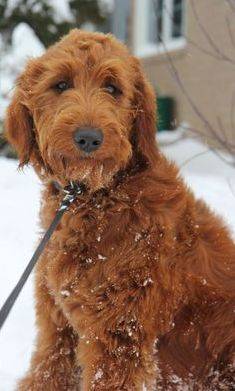
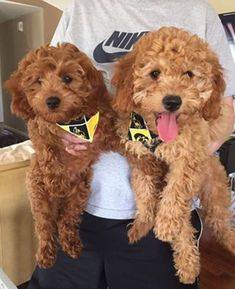
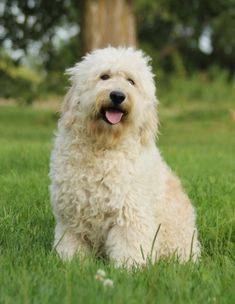
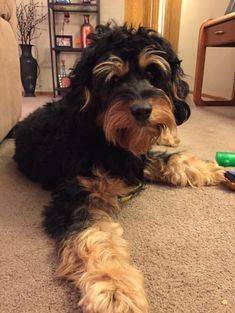
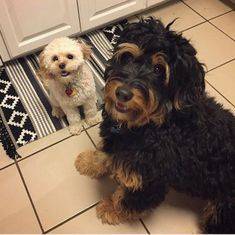
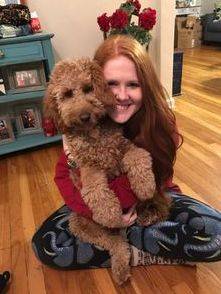
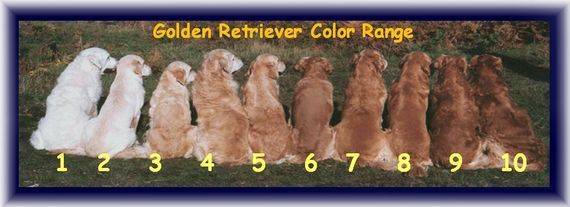
Coats can vary in color. A good way to predict adult color is to look at the ears of the puppy. In addition, consider the pedigree when expecting a litter. It is hard to understand the complexity of the gene pool when mating. From my experience, red is considered a dilute gene of black. When red is bred with white, black or brown, black is dominate and pups are black. Two red parents, will make red or apricot. However, to carry the true red gene is very rare. Red can often fade with maturity. Many breeders boast about having red as it is highly sought after, but it can and may fade with time. It is said that only 5 breeders truly carry the red gene/line. I make a good effort at trying to produce red, but it is more rare. Brown and black also produce black. Two browns will make brown. Red can be so dark red that it is considered mahogany or rust. My Sangria, F1 mini-goldendoodle female is an example of this beautiful color. I do not claim to be an expert in the study, nor do I make any guarantees on future adult color. In breeds like the cocker spaniel, the red will be apricot as a pup, but can become dark red with maturity. Spots can also widen with maturity or appear to have moved around as they broadened out. In designer breeds, the puppy can look completely different as an adult then how it did as a puppy. You may notice this at the very first haircut. As much as we love color, we need to pay more attention to the temperament of the puppy and make sure the puppy is very socialized and loved, especially during the critical stage of development up to 5 months. See my temperament testing pagefor more information on this.
Regarding coats in goldendoodles and the hypo-allergenic questions, please see this wonderful information here:
http://www.dogster.com/forums/groups/thread/453567
3 types of coats:
1.) Loose and wavy: This is the most common type of coat found in a goldendoodle such as an F1. They are considered low to non-shed. They are easy to maintain. You may want to brush in the common friction areas such as behind the ears, hind quarters, and underarms. Bodily brushing about once a week. A young puppy with a loose or wavy coat will not show any waves/crimping on the forehead.
2.) Straight: These coats are considered flat or sporty like the golden retriever. They are the easiest to maintain and need minimal brushing. They will not show any waves/crimping on the forehead as a puppy. They will have some shed.
3.) Curly: These coats can be easily identified with the crimping on the forehead as a pup. They are most common in F1bs. Their coats can have "loose curl" or "tight curl." They require daily brushing and are considered non-shed and the best choice for allergy customers.
Examples:
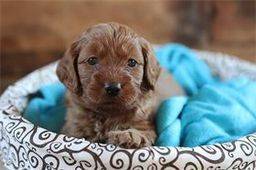
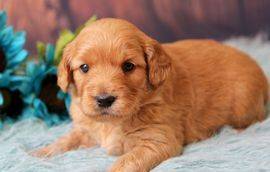
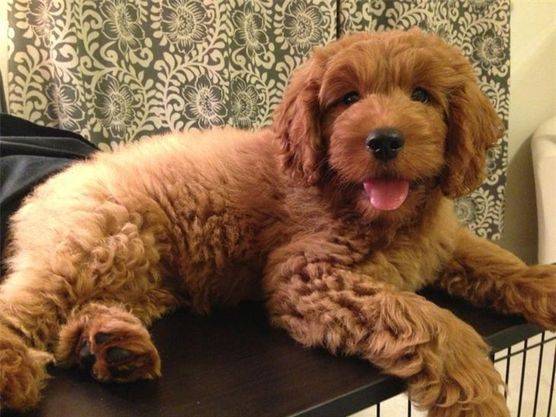
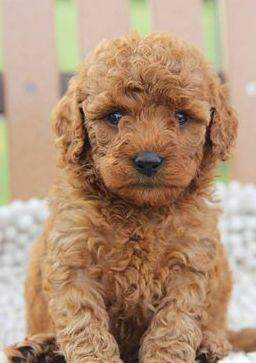
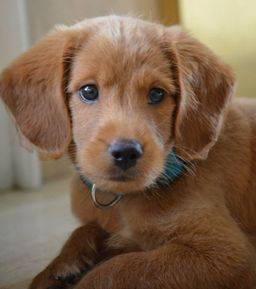
Left: "Curly" as a puppy. Puppy at 5 weeks old. F1b, crimping on forhead visible.
Right: "Straight" at 5 months. This coat type typically can be found in F1 litters. No crimping on forehead or ears.
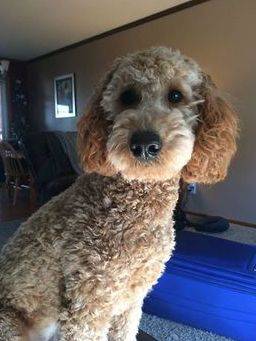
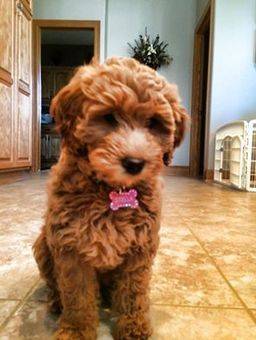
Left: tight curl as an adult. Right: "Curly" at 10 weeks old. More squiggles on forehead than "loose and wavy" type. Notice the difference. This is an example of an F1b. This coat type is best for those that have allergies and desire lots of curl . This cross is 2/3rds poodle and 1/3rd golden retriever.
